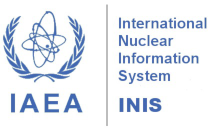New article published: V. 13 n. 3 (2025)
Determination of radon (222Rn) activity concentration in the Institute of Radiation Protecion and Dosimetry, Rio de Janeiro, Brazil
Abstract: Radon is a natural radioactive element responsible for around 40% of the annual dose from natural sources of radiation. It is considered the second leading cause of lung cancer by UNSCEAR. For these reasons, it is important to determine the concentration of radon in built environments. The aim of this study was to quantify the concentration of radon on the premises of the Institute of Radioprotection and Dosimetry (IRD/CNEN). Radon concentrations were measured using CR-39 solid-state nuclear trace detectors, which were exposed for 90 days in 20 of the Institute's buildings, including rooms, offices, bathrooms and laboratories. The laboratorial procedures were conducted at the Radon Laboratory of the Environmental and Occupational Radioprotection Division (DIRAD) of the IRD/CNEN. The statistical uncertainties were provided by the equipment manufacturer's software, and the effective dose calculations strictly followed the appropriate bibliographical references. The average radon concentration found was 86.4 Bq/m³, ranging from 6.5 Bq/m³ to 285.4 Bq/m³, demonstrating compliance with national regulations. Regarding the maximum annual effective dose, for a 5-hour working day, the values ranged from 0.13 mSv/year to 1.33 mSv/year. For an 8-hour working day, the values ranged from 0.21 mSv/year to 2.14 mSv/year. Based on the concentrations obtained, it was possible to check whether the Institute's facilities meet the requirements of standard CNEN NN 3.01, as well as calculating the maximum annual effective dose for two scenarios: 5-hour and 8-hour working days. Read full article.






















